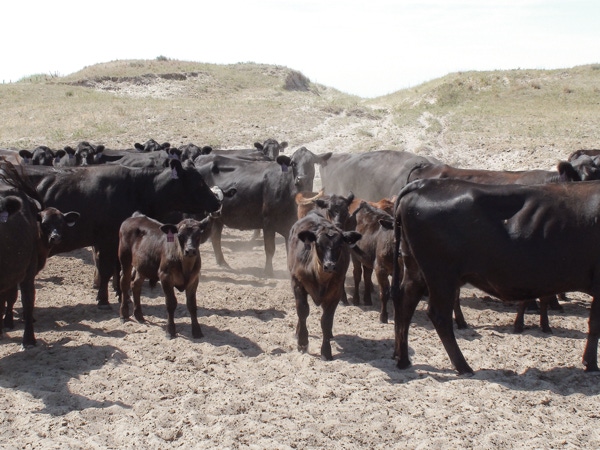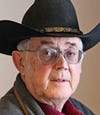Do some economic modeling of alternative drought management strategies before a drought hits. And then implement when needed.
September 17, 2020

In this month’s conference telephone call, my study herd manager said his ranch was getting on the dry side, and he was thinking about what his drought management strategy should be for the rest of this year.
I quickly went to the National Drought Monitor webpage, droughtmonitor.unl.edu, to see how widespread this summer drought is as of late July 2020. I recommend my readers look at the drought monitor for their region.
Part of western Nebraska and the eastern two-thirds of Wyoming were classified as “abnormally dry.” Colorado was considerably worse, with the eastern, southern and southwestern part classified as “extreme drought.” Basically, there was considerable drought from Montana south into Texas.
Yes, we decided we should focus on potential drought strategies for my study herd manager.
I shared with my study herd manager that in the 1980s and 1990s, I worked with some Northern Plains ranchers who shipped their cows completely out of their drought area to another area with more normal rainfall.
They taught me that you can ship cows north or west better than south into the heat, or east into heat and higher humidity. Transportation is also costly.
I also shared with my study herd manager that I worked extensively with Wyoming ranchers in the 2002 drought and again in the 2006 drought.
Several of us conducted drought management producer meetings in Wyoming and surrounding states focused on drought management strategies. I capitalized on these past drought experiences to published several extensive drought economic analyses for the 2012 drought.
Fire sale strategy
Traditionally, ranchers have sold cows to reduce stocking rates as the drought progresses. Cash income goes up dramatically as the ranch is destocked. Sometimes this money is used to pay down debts.
Then, cash expenses and debt typically go up even more as the ranch is once again restocked after the drought. Restocking prices are normally higher than the fire sale destocking prices.
As an economist, I became quite concerned with this fire sale strategy in the 2002 and 2006 droughts in Wyoming. I argued that selling down the cow herd impacts the financial well-being of the ranch business for the next seven to 10 years — one complete generation of cows.
Either the ranch suffers a substantial drop in gross income for the next few years, or the ranch has to repurchase breeding females — often expensive replacement females.
Visible and invisible costs
During the 2012 drought, I focused on studying the financial impact of a drought, as it has a lasting impact for at least one generation of females. I concluded that the long-run net result of a drought is higher costs of production for the lifetime of the next generation of females.
There are three added economic costs in a drought that can be broken down into visible and invisible costs. First, selling the breeding females, generally at fire sale prices, is a visible drought cost. Later, buying back or raising added replacements after the drought is another visible cost.
Having fewer calves to sell in the years following the depopulation is an invisible cost — sometimes a large invisible cost spread out over multiple years. In many cases, the invisible cost exceeds visible costs.
Destocking vs. depopulating
As ranchers formulate drought management strategies, it is important that they separate “destocking” decisions from “depopulating” decisions.
Destocking concerns removing cows from the grassland, while depopulating removes the cows from ranch ownership.
These are two distinct management decisions, each with its own economic consequences.
You can destock the herd by removing it from grassland and feeding cows in a drylot, or by moving it to grass in another region or state. A lot of cows were moved east from eastern Colorado in the 2002 drought. Some of these experiences were more successful than others.
In my travels in September 2002, I observed a tremendous number of hay trucks heading into Texas and Oklahoma. Apparently, many of these producers decided to not to depopulate.
A second economic point is that optimal drought management strategies vary with the stage in the cattle cycle. When calf prices are high, several alternative drought strategies may be feasible. When calf prices are low, about the only logical economic strategy is to sell cows.
The 2002 drought was characterized by low calf prices and low fire sale prices for beef cows, followed by high replacement prices.
The 2006 drought was during a national herd expansion characterized by higher calf prices, higher fire sale prices and lower replacement prices after the drought. I would suggest that today’s drought situation is similar to the 2002 drought.
Drought strategies
In the 2002 and 2006 droughts, I simulated the 10-year implications of different drought strategies. No. 1 was holding back zero replacement heifers for one and/or two years. No. 2 was selling off 30% of the mature females to reduce grass demand.
No. 3 was buying back replacement females after the drought ends. And No. 4 was buying feed and keeping the original cow herd in place.
My conclusion was that the 2002 and 2006 droughts both had the potential of reducing the next 10-year net cash flow of the ranch by around 43%!
My studies of the 2002 and 2006 droughts led me to conclude that the optimal drought strategy for the 2006 drought was not the same as the optimal drought strategy for the 2002 drought. This suggests that ranchers should be careful in using previously used drought strategies in the current drought.
One final thought shared with my study herd manager: How your herd has been performing economically should play a critical role in your drought management plan.
Let’s look at his last three years. His 250-cow herd grossed $1,006 per cow in 2018, grossed $944 per cow in 2019 and is projected, before taking the drought into account, to gross $975 per cow in 2020. Total costs per cow were $861 in 2018, $877 per cow in 2019 and are projected at $873 per cow in 2020 before the drought.
The calculated net return to unpaid family labor, management and facilities was $145 per cow in 2018 and $65 per cow in 2019, and is projected before the drought at $111 per cow for 2020.
I suggested that my study herd manager had to be careful of what drought strategy he used in the current cattle cycle price low. It may be a few years to the next price high.
My advice to my study herd manager is for us to do some economic modeling of alternative drought management strategies, where we look at the economic impact of alternative drought management strategies over the next several years.
To start, we should look at 1) supplemental summer feed during the drought, 2) early weaning, 3) culling replacement heifers on grass now, 4) culling this year’s late calving cows, and 5) culling older cows. I plan to share these economic evaluations with my readers in later articles. Stay tuned.
Hughes is a North Dakota State University professor emeritus. He lives in Kuna, Idaho. Reach him at 701-238-9607 or [email protected].
About the Author(s)
You May Also Like



.png?width=300&auto=webp&quality=80&disable=upscale)
.png?width=300&auto=webp&quality=80&disable=upscale)
